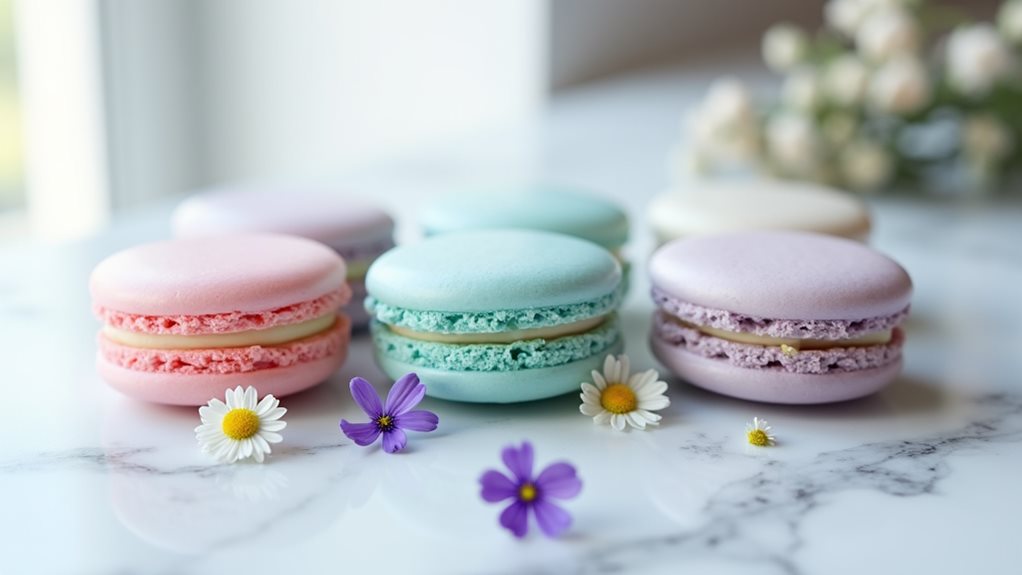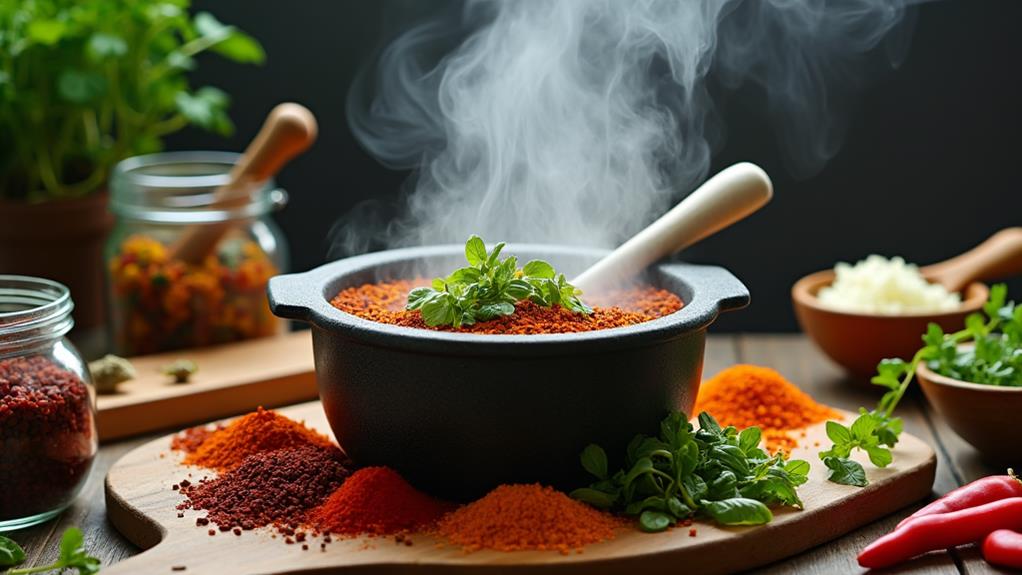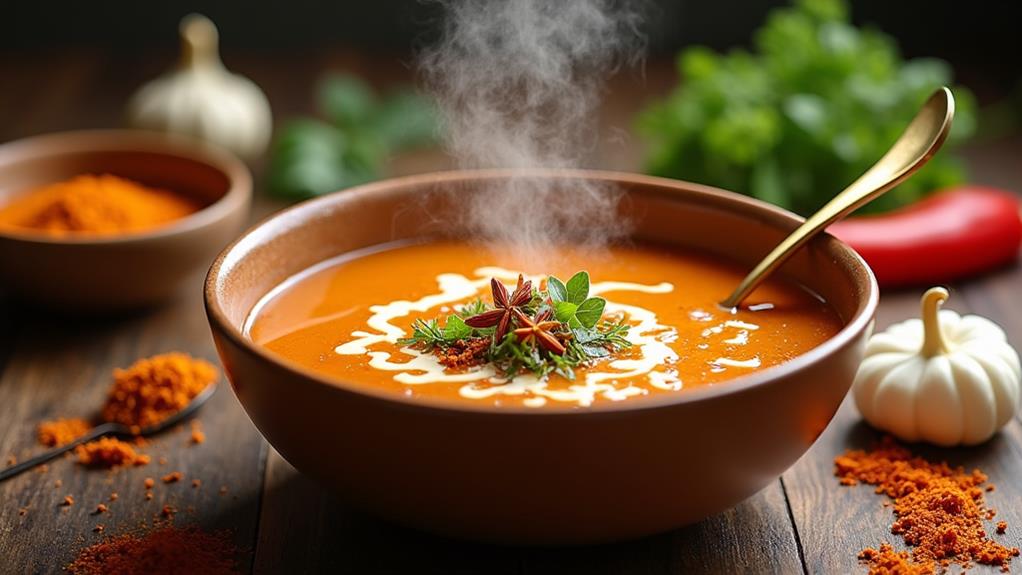Like delicate jewels in spring's crown, Pastel Easter Egg Macarons transform your holiday celebrations with their ethereal beauty and heavenly taste. You'll discover these French-inspired confections aren't just visually stunning but also represent a perfect balance of textures and flavors. Whether you're an experienced baker or a curious beginner, creating these elegant treats combines artistry with precise technique—and you're about to learn the secrets behind their perfect execution.
Key Takeaways
- Pastel Easter Egg Macarons are French sandwich cookies featuring light, airy shells and creamy fillings in spring-inspired colors.
- Essential ingredients include almond flour, powdered sugar, egg whites, granulated sugar, and pastel food coloring for seasonal appeal.
- Success requires proper macaronage technique, achieving stiff meringue peaks, and allowing shells to rest before baking.
- Macarons should be stored in airtight containers and refrigerated for up to one week to maintain freshness.
- These treats make perfect Easter gifts when packaged in clear cellophane bags with pastel ribbons for festive presentation.
History
Although macarons have become a global phenomenon in recent years, their origins can be traced back to 16th century Italy, where they were initially created as simple almond cookies in Venetian monasteries.
You'll find that these early versions didn't include the signature filling or vibrant colors we see today.
The modern macaron, with its distinctive sandwich-style design, emerged in France during the 1800s when two cookies were joined together with ganache filling.
You can thank the famous French pastry house Ladurée for popularizing this style and transforming macarons into the colorful delicacies we know today.
They've become particularly associated with Easter celebrations due to their pastel variations, which perfectly complement the season's palette of soft pinks, blues, and yellows that mirror decorated Easter eggs.
Recipe
Pastel Easter Egg Macarons bring the delicate charm of spring to your dessert table. These light, airy French cookies feature crisp outer shells with perfectly chewy interiors, creating the quintessential macaron texture that has made them a beloved treat worldwide.
These special holiday macarons transform the classic French confection into festive spring treats with their soft pastel hues. The combination of almond flour and meringue creates a delicately sweet cookie that can be filled with various spring-inspired flavors like lemon curd, vanilla buttercream, or white chocolate ganache.
- 1 cup (100g) almond flour
- 1 cup (120g) powdered sugar
- 2 large egg whites, room temperature
- 1/4 cup (50g) granulated sugar
- Pastel food coloring
- Parchment paper or silicone baking mats
- Piping bag with round tip
Sift almond flour and powdered sugar together twice to remove lumps. Beat egg whites until foamy, then gradually add granulated sugar until stiff peaks form. Gently fold dry ingredients into egg whites in three additions until mixture flows like lava (about 40-50 folds).
Divide batter and add desired pastel food coloring. Pipe 1-inch circles onto lined baking sheets, tap sheets firmly on counter to remove air bubbles. Let rest 30 minutes until tops form a skin. Bake at 300°F (150°C) for 15-17 minutes, rotating halfway through. Cool completely before filling.
For best results, avoid making macarons on humid days as moisture affects shell formation. The macaronage (folding) stage is critical – test batter by drawing a figure-8; it should disappear within 10 seconds while maintaining some thickness.
Age egg whites for 24 hours at room temperature for optimal results, and ensure all equipment is completely grease-free. Allow finished macarons to mature in refrigerator for 24 hours before serving for best texture and flavor development.
Cooking Steps
You'll start your macaron-making journey by lining your baking sheets with parchment paper and carefully combining your sifted dry ingredients in one bowl while working on achieving stiff peaks in your meringue in another.
Next, you'll need to master the crucial macaronage technique, folding the ingredients together until the batter reaches a ribbon-like consistency that flows off your spatula.
Finally, you'll pipe uniform circles onto your prepared sheets and let them rest until a skin forms, ensuring those signature smooth tops and ruffly feet once baked.
Step 1. Prepare Baking Sheets With Parchment

Two large baking sheets lined with parchment paper form the essential foundation for creating perfect macarons.
You'll want to ensure your parchment paper lies completely flat, with no wrinkles or bumps that could disrupt the macaron's shape. If your paper curls at the edges, you can secure the corners with a small dab of batter.
Before piping, it's helpful to draw 1-inch circles on the parchment as guides, spacing them about 2 inches apart to allow for proper air circulation.
Make sure to flip the parchment over so you're not piping directly onto the ink. You can also use pre-printed macaron templates, which you'll slide underneath your parchment paper.
This preparation step is crucial for achieving uniformly sized macarons that will bake evenly.
Step 2. Mix Dry Ingredients Together
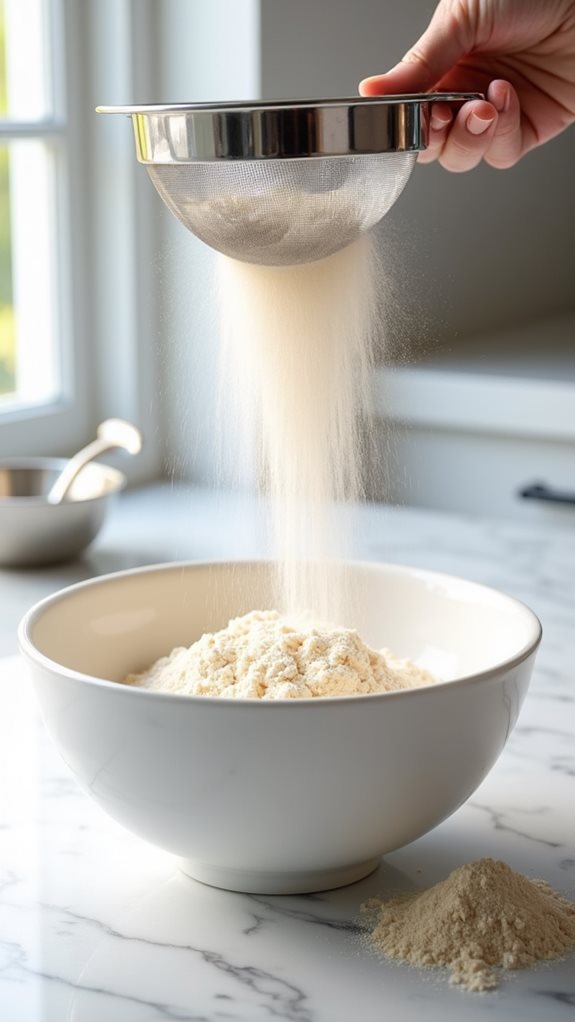
Sifting marks the crucial first step in preparing your macaron's dry ingredients, as proper incorporation of the almond flour and powdered sugar creates the foundation for smooth, professional-looking shells.
Start by measuring exactly 100g of almond flour and 120g of powdered sugar into separate bowls, ensuring precise amounts for optimal results.
Position your sifter over a clean, dry bowl and combine both ingredients through it twice, removing any large particles that don't pass through. This double-sifting process aerates the mixture while eliminating lumps that could mar your finished macarons.
Once you've completed the second pass, gently whisk the sifted ingredients together to ensure they're evenly distributed. You'll need this uniform mixture ready before beginning work on your meringue.
Step 3. Blend Meringue Until Peaks Form

Crafting the perfect meringue begins with room temperature egg whites, a critical foundation for achieving those signature stiff peaks in your macaron batter.
In a clean, dry bowl, start beating your egg whites at medium speed until they become foamy, which typically takes about 1-2 minutes.
Once you see consistent foam, gradually add your granulated sugar while continuing to beat the mixture.
You'll want to increase the speed to medium-high, watching carefully as the meringue transforms. The mixture will become glossy and start forming soft peaks.
Keep beating until you can hold the whisk upside down and the peaks stand straight without flopping over – that's when you'll know you've achieved the perfect stiff-peak stage necessary for successful macarons.
Step 4. Fold Mixture Until Ribbony
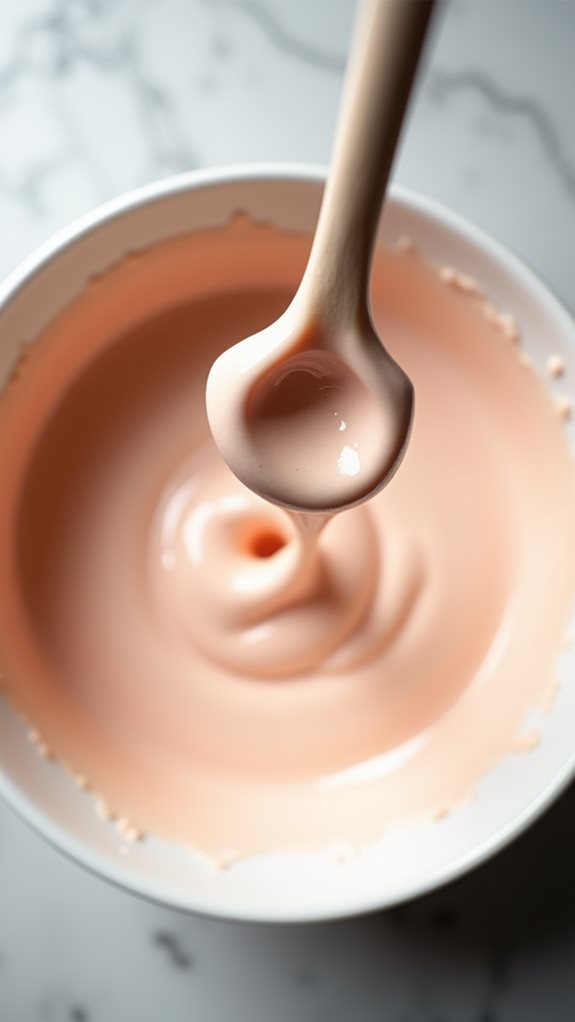
With your meringue at the perfect consistency, it's time to master the macaronage – the careful process of combining your dry ingredients with the whipped egg whites.
Add one-third of your sifted almond flour and powdered sugar mixture to the meringue, gently folding from the bottom up until just combined. Repeat with the remaining dry ingredients in two more additions.
Continue folding the mixture until it reaches a lava-like consistency, where a ribbon of batter drawn across the surface disappears within 10 seconds.
You'll know you're there when the batter flows smoothly off your spatula without breaking. Be careful not to overmix – if your batter becomes too runny, your macarons will spread and lose their shape during baking.
Step 5. Pipe and Rest Shells
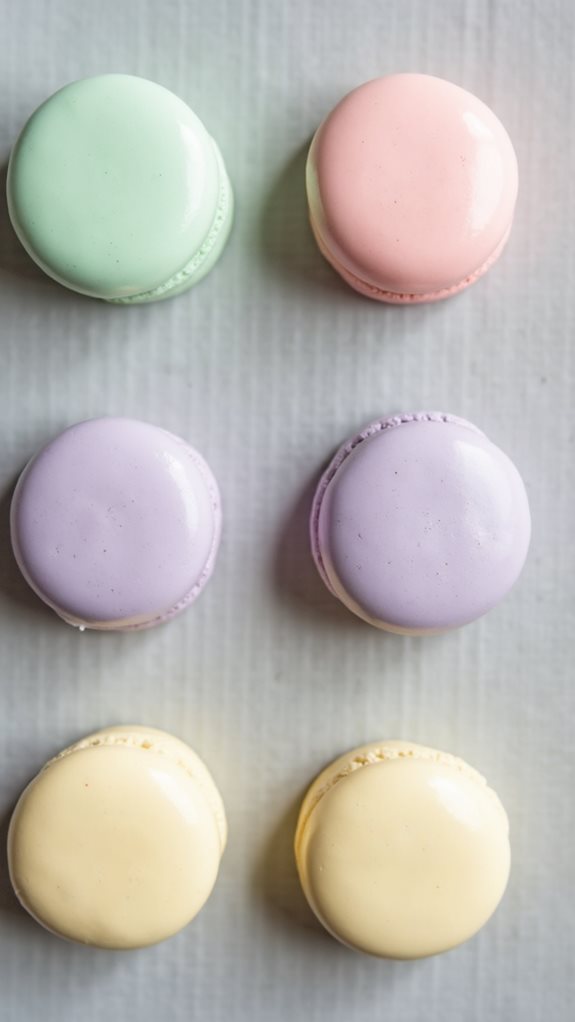
Transfer your colored macaron batter into piping bags fitted with a 1/2-inch round tip, ensuring you'll have enough room to control the flow while piping.
Hold the bag perpendicular to your parchment-lined baking sheet and pipe 1-inch circles, maintaining consistent pressure to create uniform shells. You'll want to position the tip about 1/4 inch above the surface, allowing the batter to flow naturally.
Once you've piped all your shells, firmly tap the baking sheet against your counter several times to release any trapped air bubbles.
Let the macarons rest at room temperature for 30 minutes, or until they develop a dry, matte surface that's no longer sticky when lightly touched. This resting period is crucial for forming the characteristic "feet" during baking.
Final Thoughts
Although mastering macarons requires patience and practice, these delicate Easter egg-inspired treats will become easier to create with each attempt.
Don't get discouraged if your first few batches aren't perfect – focus on understanding how the batter should flow and recognizing the ideal meringue consistency. You'll develop an instinct for the proper macaronage technique over time.
Remember to store your finished macarons in an airtight container in the refrigerator, where they'll stay fresh for up to a week.
For the best flavor and texture, let them come to room temperature before serving. If you're planning to give these as gifts, you can package them in clear cellophane bags tied with pastel ribbons, creating a stunning presentation that captures the essence of spring.

